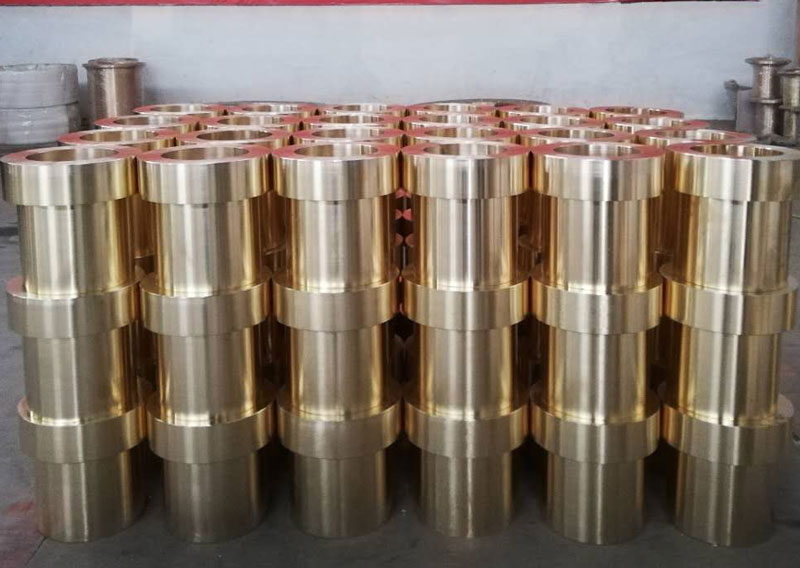Processing non-standard bronze bushings involves several specialized steps to ensure they meet the required specifications and performance standards.

processing technology:
1. Material Selection:
- Bronze Alloy Choice: The selection of the appropriate bronze alloy (e.g., SAE 660, C93200, C95400) is critical. Each alloy has different properties such as hardness, strength, wear resistance, and machinability.
- Raw Material Quality: Ensure the raw material is free from impurities and defects. This can be verified through material certification and inspection.
2. Design and Specifications:
- Custom Design: Non-standard bushings require precise design specifications. These include dimensions, tolerances, surface finish, and specific features (e.g., flanges, grooves, lubrication holes).
- Technical Drawings: Create detailed technical drawings and CAD models that outline all necessary specifications and features.
3. Casting and Forging:
- Casting: For large or complex bushings, sand casting or centrifugal casting methods may be used. Ensure uniform cooling to avoid internal stresses and defects.
- Forging: For smaller bushings or those requiring high strength, forging may be used to refine the grain structure and improve mechanical properties.
4. Machining:
- Turning and Boring: CNC lathes and boring machines are used to achieve the desired internal and external dimensions.
- Milling: For complex shapes or additional features like keyways and slots, CNC milling machines are employed.
- Drilling: Accurate drilling for lubrication holes and other custom features.
- Threading: If the bushing requires threaded sections, precision threading operations are performed.
5. Heat Treatment:
- Stress Relieving: Heat treatment processes such as annealing or stress relieving can be applied to reduce internal stresses and improve machinability.
- Hardening: Some bronze alloys can be hardened to improve wear resistance, though this is less common for bushings.
6. Finishing:
- Grinding and Polishing: Precision grinding to achieve the required surface finish and dimensional accuracy.
- Surface Coating: Applying coatings (e.g., PTFE, graphite) to reduce friction and enhance wear resistance, if specified.
7. Quality Control:
- Dimensional Inspection: Use precision measuring tools (micrometers, calipers, CMM) to verify dimensions and tolerances.
- Material Testing: Conduct tests for hardness, tensile strength, and chemical composition to ensure material conformity.
- Non-Destructive Testing (NDT): Methods such as ultrasonic testing or dye penetrant inspection can be used to detect internal and surface defects.
8. Assembly and Fitment:
- Interference Fit: Ensure proper interference fit between the bushing and housing or shaft to prevent movement and wear.
- Lubrication: Ensure appropriate lubrication channels or grooves are present for operational needs.

Technical Requirements:
- Dimensional Tolerances: Must be strictly adhered to as per the design specifications to ensure proper fit and function.
- Surface Finish: Achieve the required surface roughness (e.g., Ra value) to ensure smooth operation and reduced friction.
- Material Properties: Verify that the material meets the specified mechanical properties, including hardness, tensile strength, and elongation.
- Heat Treatment Certification: If applicable, provide certification that the bushing has undergone the specified heat treatment processes.
- Inspection Reports: Maintain detailed inspection reports for dimensional accuracy, surface finish, and material properties.
- Compliance with Standards: Ensure the bushings comply with relevant industry standards (e.g., ASTM, SAE, ISO) for material and manufacturing processes.
By adhering to these technologies and technical requirements, non-standard bronze bushings can be produced to meet precise specifications and perform reliably in their intended applications.

